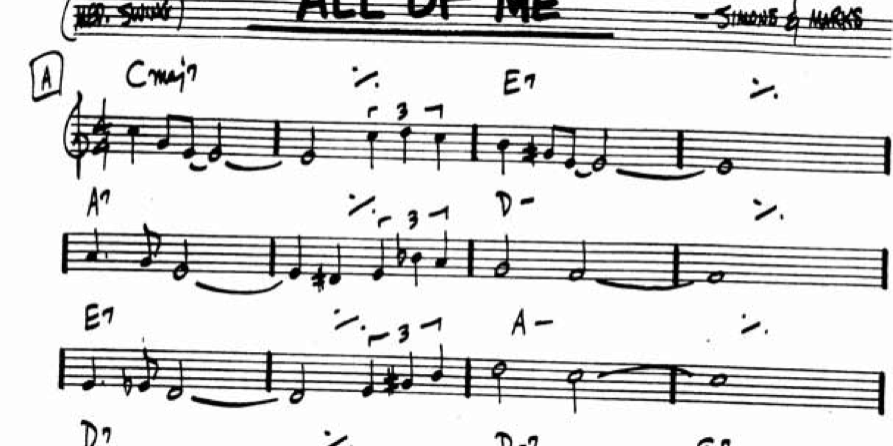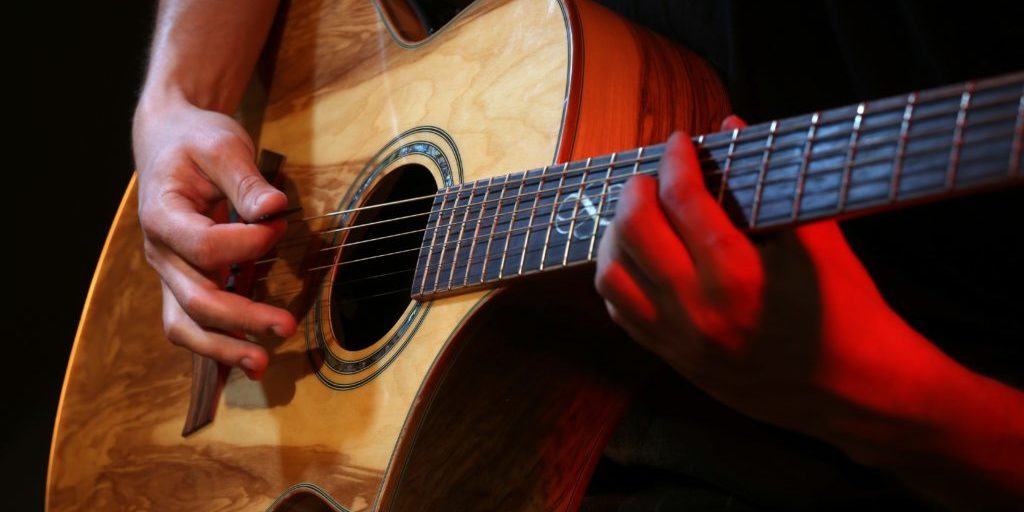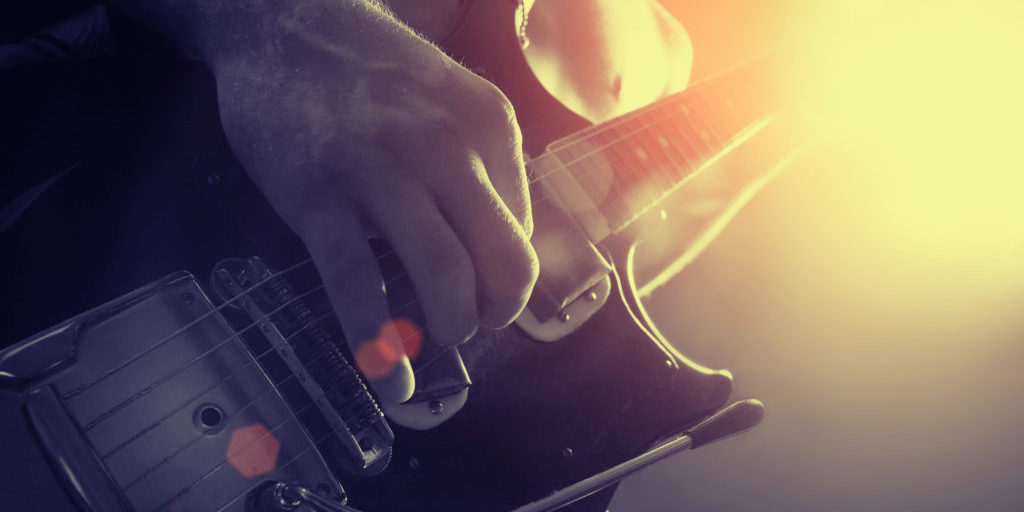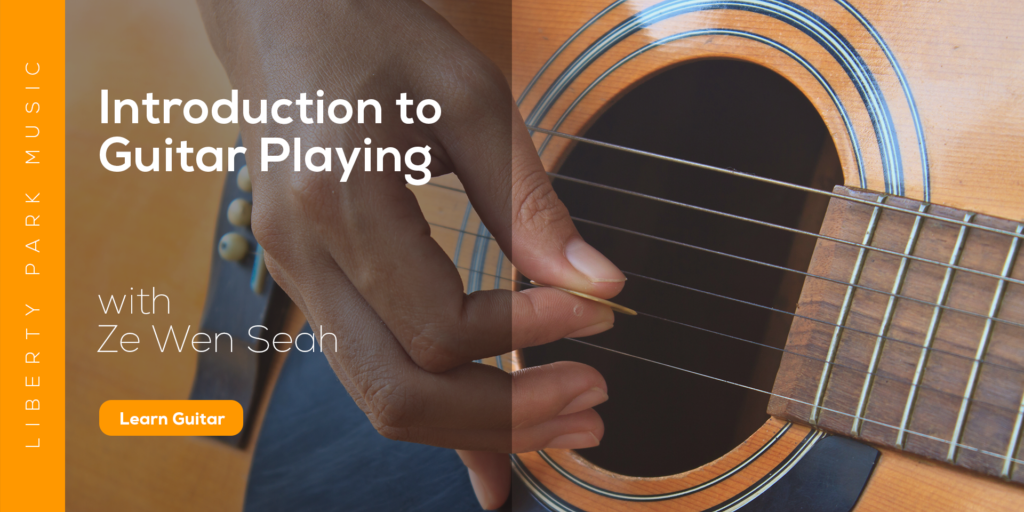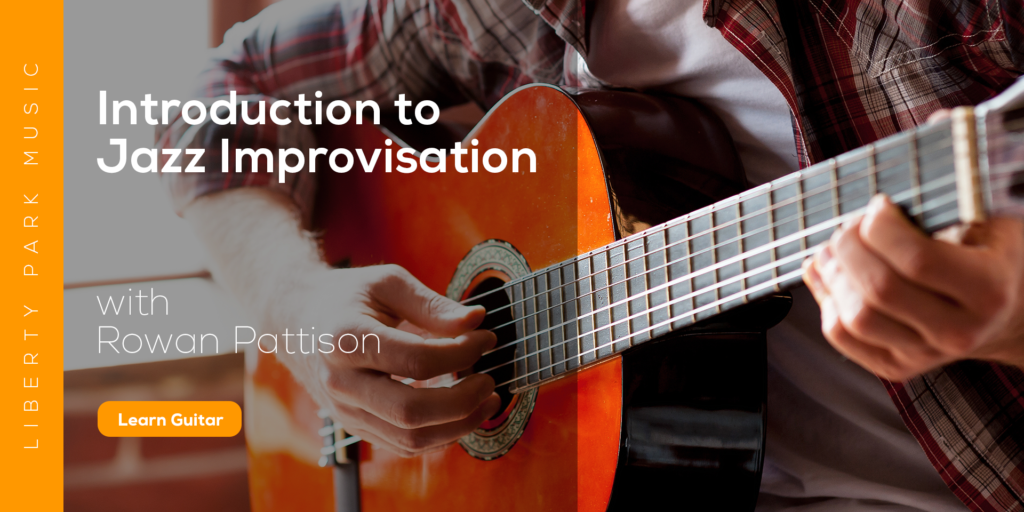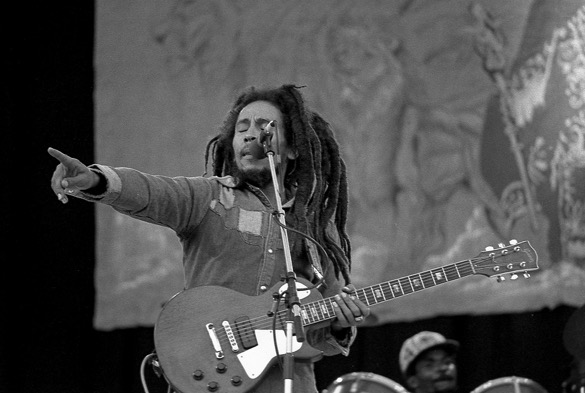
"No woman no cry," one of Bob Marley’s most famous songs, was released in 1975 as a Live single. It is proof that simplicity can be effective, as its repetitive, diatonic nature proves very catchy. Harmonically straight-forward, the song is a loop of diatonic chords, allowing the beautiful melody and carefully-crafted lyrics to be the focus. The idea of this arrangement is to harness the use of our fingers on the picking hand and to avoid any dents in your nail, which might catch onto the string.
Simple chords allow us to easily arrange the song for solo guitar. Our focus so far in this course has been the I-V-vi-IV chord progression, which is C-G-Am-F in the key of C major. “No Woman No Cry” contains the same chord progression plus something new, a bassline. The baseline adds a third dimension to our arrangement, as if we are simulating a bass guitar, chord player, and melody all on one fretboard. The bassline follows the chord progression in a fairly simple fashion, except we are to play the note B in the bass of the G chord (an inversion) instead of the root note G.
1. Inversions
A chord or a simple triad contains three notes: root, third, and fifth; for our G chord, they are G (root), B (third) and D (fifth). The lowest note is often the root note, in which case the chord is in root position. An inversion is when we take the lowest note of the voicing and put it on top. For example:

A G triad voicing has two inversions:

So when we play a B in the bassline underneath our G chord, the chord is in first inversion.
2. Playing the progression
We are going to be using four open position chord shapes:
C G Am F
In order to make the G a first inversion, we can simply drop the bottom note (G) and play the B on the second fret of the A string. Our bassline will look like this:

Firstly, practice playing this on its own and focus on the rhythm. Play to a metronome so you can clearly hear where the notes should sit in relation to the pulse. Use your thumb to pluck each note, which frees up your other fingers for the melody. In the Bob Marley recording, this bassline is played clearly. When you feel comfortable with this practice, add in the chords, and the bassline should fit naturally under the chords.
Learn with LPM
If you are looking to feel comfortable with playing basic major and minor chords, power chords, and apply different strumming techniques to your practices with Ze, check out his course called Rhythm Guitar
Now that you can feel how the chords fit over the bassline, we are going to leave them out until we have mastered the melody, because playing melody and bass is a form of counterpoint, i.e. playing two melodic lines simultaneously. This requires parts of the brain that we may not be used to using, and it can feel like trying to draw a circle in one hand whilst a triangle in the other. So, it’s important to separate the tasks and take it slow.
The melody uses only the notes A-G in the first position C major scale, the chorus is:

Practice each melody note. Keep in mind you will need fingers free to play the bassline. Try to make every note ring out for its full length and pay careful attention to the rhythms.
Now let’s add the bassline:

When a note is tied to another note, we hold the note for the value of each note that is tied together, and we don’t pluck the note again until it appears untied. The ties make it much easier to visualise the rhythm and see clearly were the down beats lie. This is particularly important when two melodies are being played simultaneously, as the rhythms may cross over. Take it slowly, make sure to let the bassline ring with the melody, and don’t let either part dictate the other.
The verse uses a similar set of notes; in fact the bassline repeats the first half.

Putting the Arrangement to Practice
Once you have this under your fingers and can play it in time with the melodic rhythm, and the bass rhythm works together, we can start to add some harmony.
Take a look at the chords above the stave, C, G/B Am and F. These chords are open position chord that we should be familiar with by now. When you play the arrangement, try and incorporate the chords as they pass; it could be as simple as adding in a few extra notes here and there or creating a nice fingerpicking arrangement. This is the part where you can really start to make the song your own. You may need to experiment with different fingerings to be able to incorporate different parts of the chord.
“No Woman No Cry” is a great song that not only uses our I vi ii V Chord progression, but it also introduces us to basslines, how they imply inversions and give colour to a simple progression. We have learned how to play independent voices and rhythms on the guitar, use our fingers instead of a pick, and use the chord shapes we know to develop our own arrangement. These new techniques will expand on a whole new skill set that can change the way you play guitar by giving you the tools you need for the freedom of expression.
The next arrangement will look at Elton John’s “Can You Feel the Love Tonight” and will introduce new ideas around the progression.
More About the Teacher
Rowan Pattison is an Australian jazz and contemporary guitarist. His resumé boasts artists such as American singer Bobby Arvon (Happy Days), Broadway star Michelle Murlin, American Idol finalist Lou Gazzara, Marcus Terrel from America’s Got Talent, Vegas Trumpet prodigy Greg Bohnam and American Comedian James Stevens III, who is featured regularly on The Tonight Show and Comedy Central. Now based in Melbourne, Rowan has just lead his own trio concert Impressionism of Bill Evans on a tour of Europe playing concerts in Kyiv, Lviv, Krakow and Paris. Rowan's guitar courses with Liberty Park Music include the Introduction to Jazz Improvisation and Introduction to Solo Guitar.


